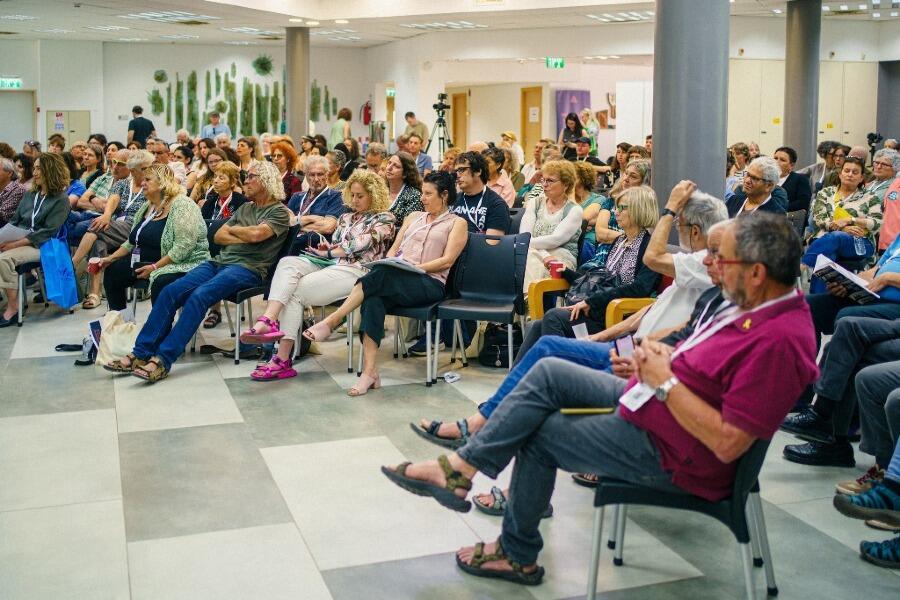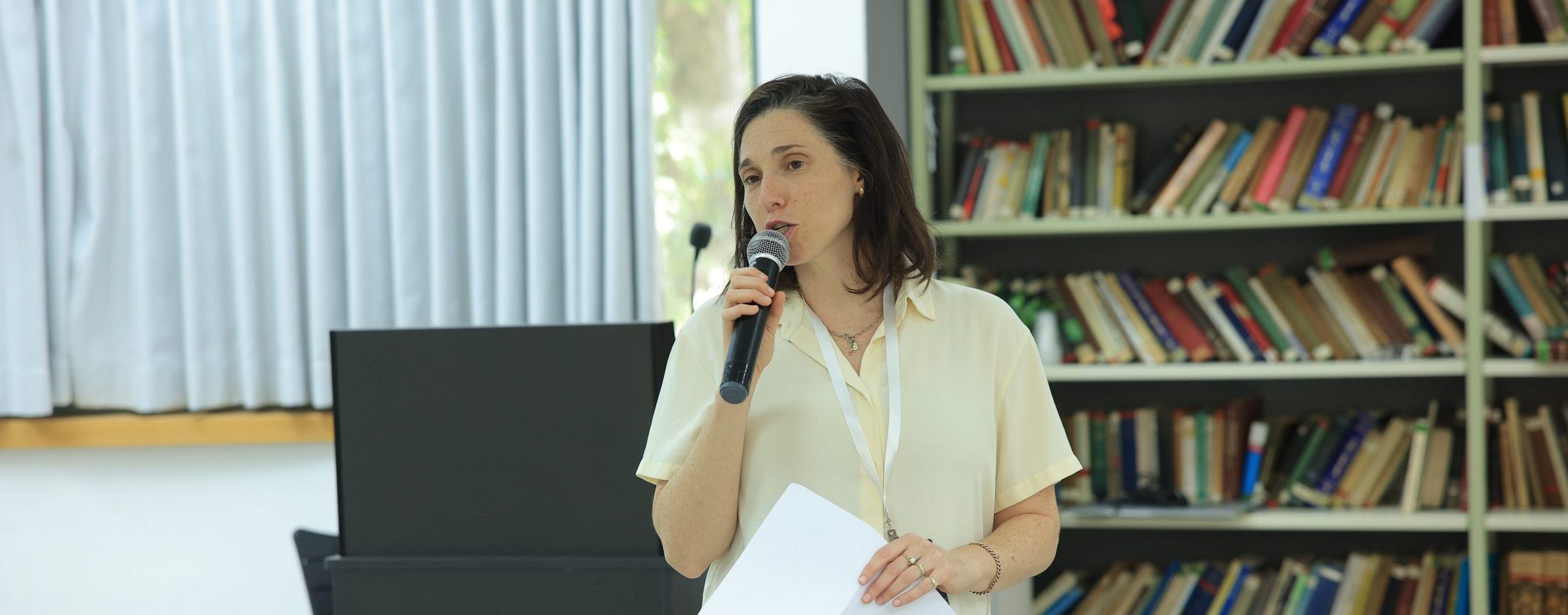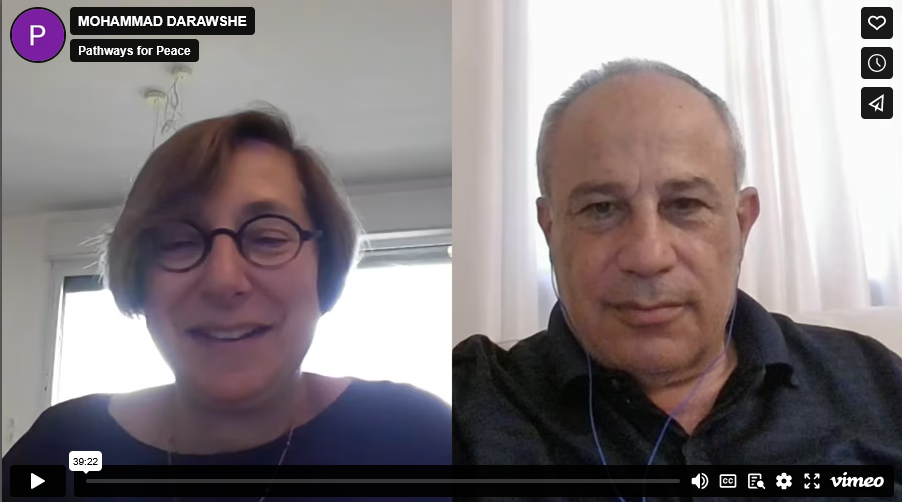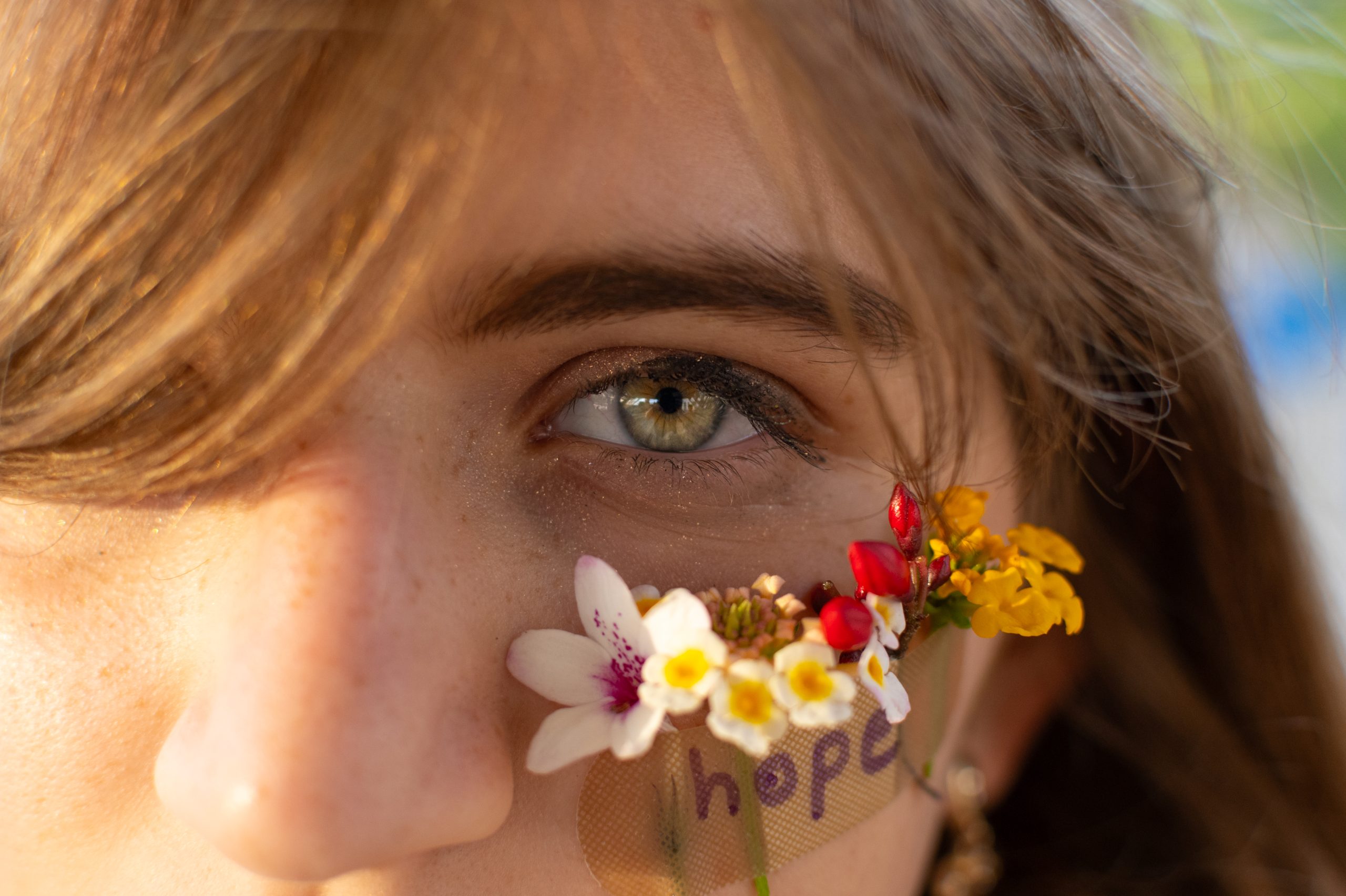The second Givat Haviva Art Conference attracted great interest. Artists, curators, art lovers, directors of numerous institutions, and concerned citizens came to hear about the Israeli art field, which exists in and responds to an extreme reality. The conference touched the heart of the sensitive and difficult reality in which the art field operates, between political pressures and Jewish-Palestinian solidarity, between silencing and creation, between individual voices and faith in the collective power of the field.
Presenters at the conference included Givat Haviva CEO Michal Sella, Givat Haviva Shared Art Center Director Anat Lidror, President of Beit Berl College and former Minister of Education Prof. Yuli Tamir, Principal of Herzliya Gymnasium Dr. Zeev Dgani, artist and lecturer Prof. Assad Azi, Israeli writer and researcher Prof. Nurit Gertz, architect and artist Sophie Abu Shakra, and international artist Raida Adon, who travelled from Paris to participate in the conference. The event included a panel moderated by Dr. Galia Bar-Orand included the participation of artists, academics, and researchers.
In her address, Givat Haviva CEO Michal Sella said, “The signs of radicalization, exclusion, and fear are present in culture and art. Artists who expressed a complex or critical position found themselves excluded, silenced, and singled out. This is a dangerous process for democracy, society, and us as people who internalize silencing. At this conference, we choose not to remain silent. Not in the name of some general hope or romantic vision, but from the understanding that it is our role – as an organization, as creators – to pave the way for shared solidarity between Jews and Arabs, between different identities within a torn reality.”
A field subject to pressure – but not silent
The main session, “The Art World Under Attack,” provided an up-to-date picture of the threats imposed on the field, such as budget cuts and closure of institutions by local authorities and municipalities. Silencing through exclusion was discussed, and how it often creates self-censorship in institutions, including academic colleges, exclusion from public discourse, and systematic disconnection from the international arena. Dr. Galia Bar Or, curator and art researcher, noted a creeping dynamic of closing museums and art centers, incidents of internal censorship, and violations of freedom of expression even in academic galleries. She also noted cases in which contemporary art that recognizes gender and multiculturalism is perceived as dangerous. At the same time, mention was made of the transformation that is taking place in some museums, the opening of representation to inclusion and diversity, and the emphasis on the ethical place of the museum in the contexts of life.
Anat Lidror, curator and director of the Givat Haviva Shared Art Center, added: “Israel is absent from the Architecture Biennale, and the announcement of the tender for the Israeli pavilion at next year’s Art Biennale is delayed. A bleak picture emerges. Is Israel interested in representative artistic voices that are not too independent in their opinions? How will Israel’s isolationist approach from the international arena affect the field in Israel?”
Personal voices from the struggle
Artist and actress Raida Adon echoed a sense of personal and collective rupture: “I live between two peoples, speaking two languages. My heart is broken, but rich.” According to her, the silencing has become an existential reality: “Artists are afraid to show up for each other. We must respond.”
Prof. Nurit Gertz described the soft censorship of the media: “An article I wrote after October 7th was not published because ‘it’s too early.’ When will the time be right? There is no other time.”
Artist and architect Sophie Abu Shakra, whose exhibition at the Vitrina Gallery at the Holon Institute of Technology was postponed and apparently canceled, described the broad support she received precisely after the postponement: “My art is about life, not about pain, but our way is to feel the pain on both sides, this is our way to healing. There were friends who distanced themselves after October 7, but there are connections that have deepened. We manage to strengthen and support each other, to talk about the pain and what we are each experiencing.”
Artist Prof. Assad Azi emphasized the role of the artist as social conscience: “Artists are the pulse of the country. There have always been prices, but now there is a real threat to humanity. Artists and art need to raise their heads and keep the embers burning.”
Yuli Tamir, president of Beit Berl College, addressed the complexity of dealing with institutional censorship through two specific cases in which she was involved, and noted that the threat of budget cuts is always looming: “The decision to deny budgets to institutions for certain expressions is always there. Every now and then the minister asks if there are Hamas supporters on the Beit Berl campus. Well – there are none, but we are constantly being watched. ‘If You Wll’ (a right-wing organization) is very diligent in filing complaints, and we consult with legal counsel where the line is. We were once sued and paid a fine of 400,000 NIS. Our role was and will be to keep the academy a safe place for students and guests, a protected space for creativity and academia.” She concluded by saying that this conference is the beginning of building a nucleus for a creative response.
Zeev Dgani, director of the Herzliya Gymnasium, spoke of the Autonomous Biennale as a positive action: “The Autonomous Biennale was held for the second time this year. Palestinian and Israeli artists working together encourages artists in such a silenced reality.”
An open heart in the face of a closed reality
The conference emphasized a clear artistic position: the shared position of the art field is a human one that recognizes pain on both sides, refuses to be silenced or excluded – on the basis of gender, culture or nationality – and operates from a deep human partnership. Evidence of this is the extensive work that is developing and growing despite the difficulties: the Shared Residency program at Givat Haviva that includes accommodation and work in a shared studio, the art incubators in Umm al-Fahm, Haifa, at Feel Beit in Jerusalem, in Rahat in the Negev, and others.
The conclusion: A field threatened – and vibrant
The field of art in Israel currently operates under a real danger of suppression, silencing, and isolation in national silos. But in the face of this danger, there is also an opposite movement – of deepening, of partnership, and of faith in multicultural human power.
It is precisely from this extreme reality that solidarity is born between Jewish and Palestinian artists, who seek not to give up – not on freedom of expression, not on true and free art, not on solidarity, and not on the possibility of a shared society here in Israel.
Finally: Two alumni of the residency program, Rajid Suad and Rotem Sharaf, took the stage during the conference and spoke about their experiences living and creating together. You are invited to listen:





